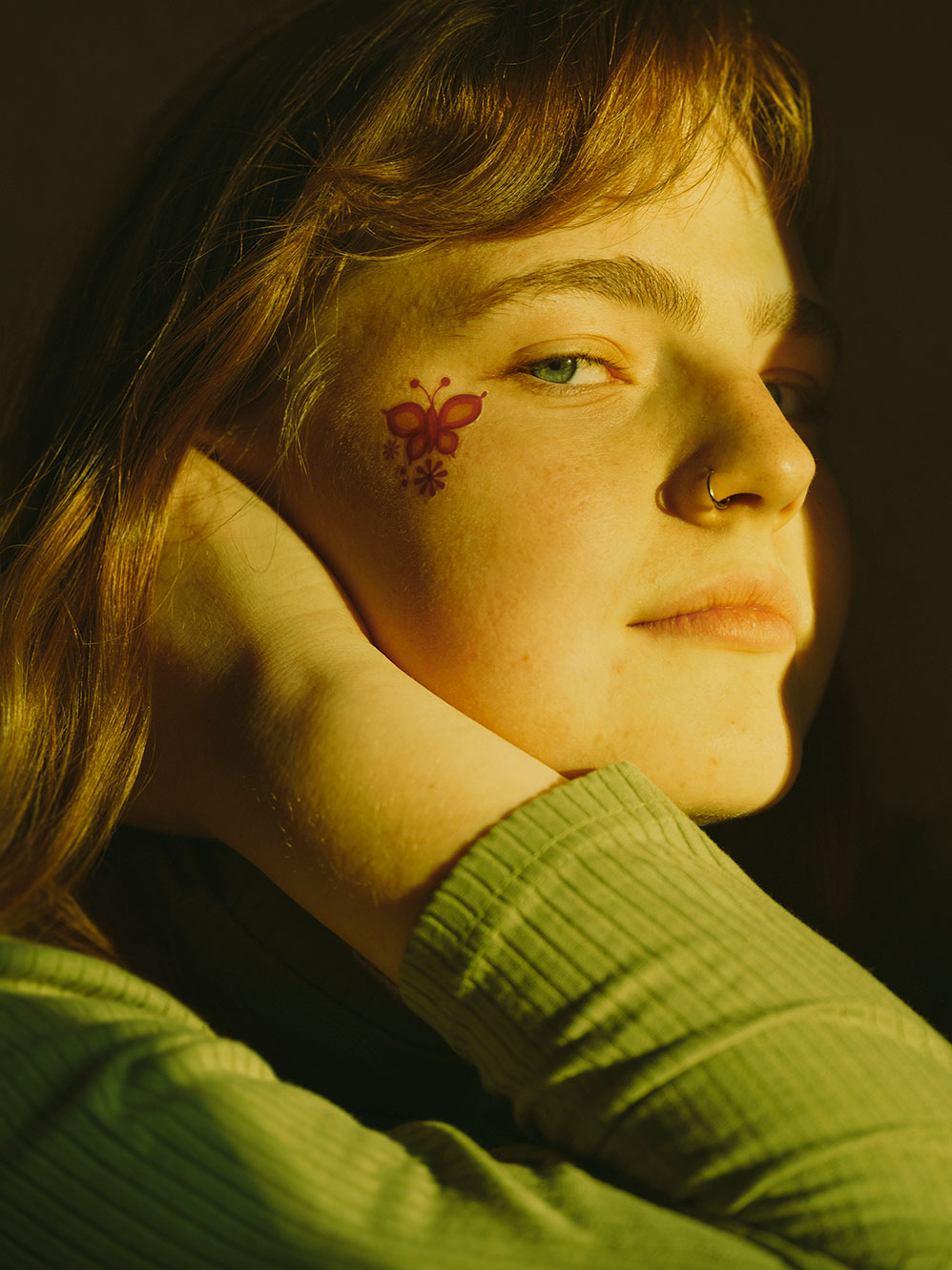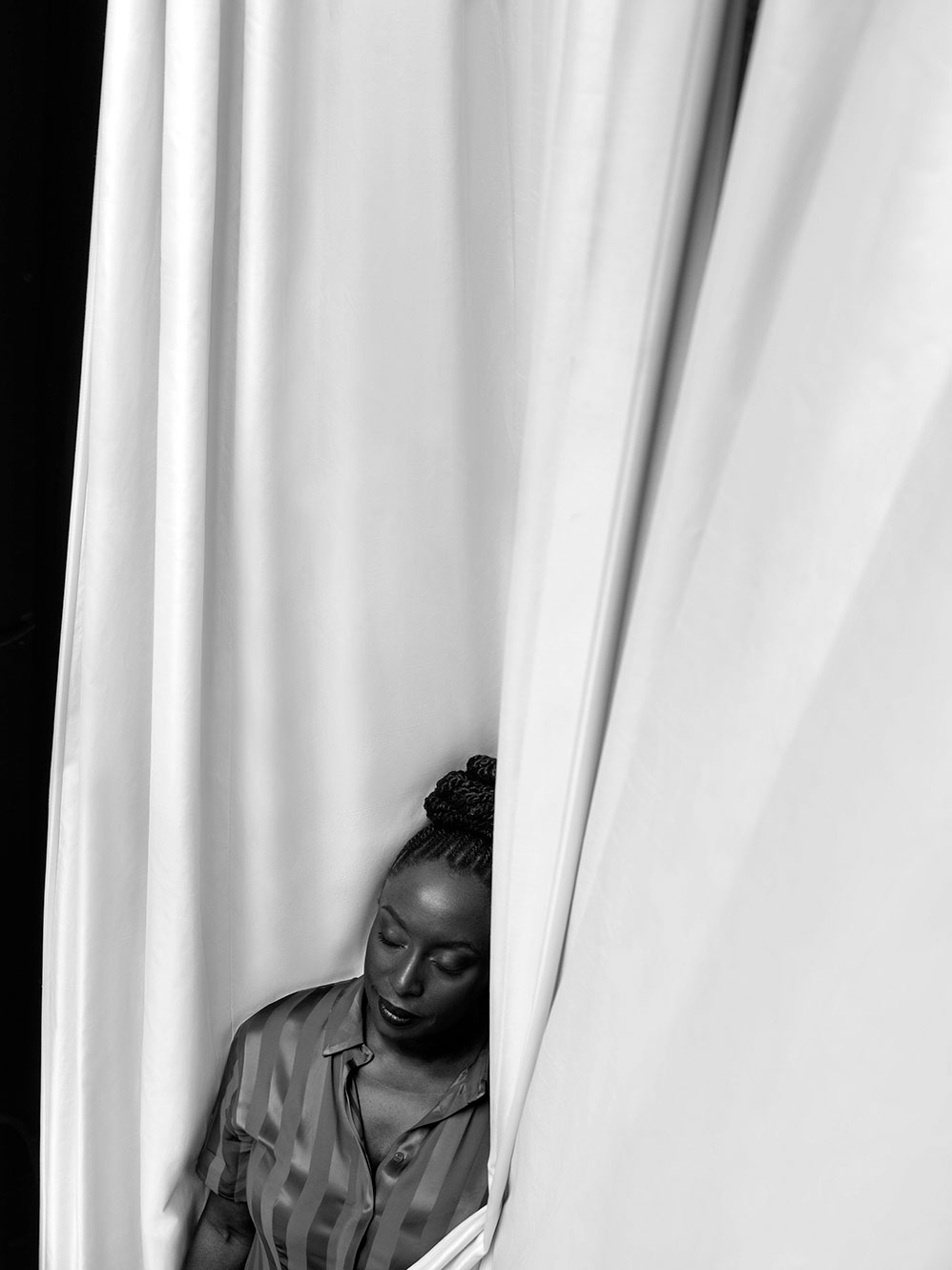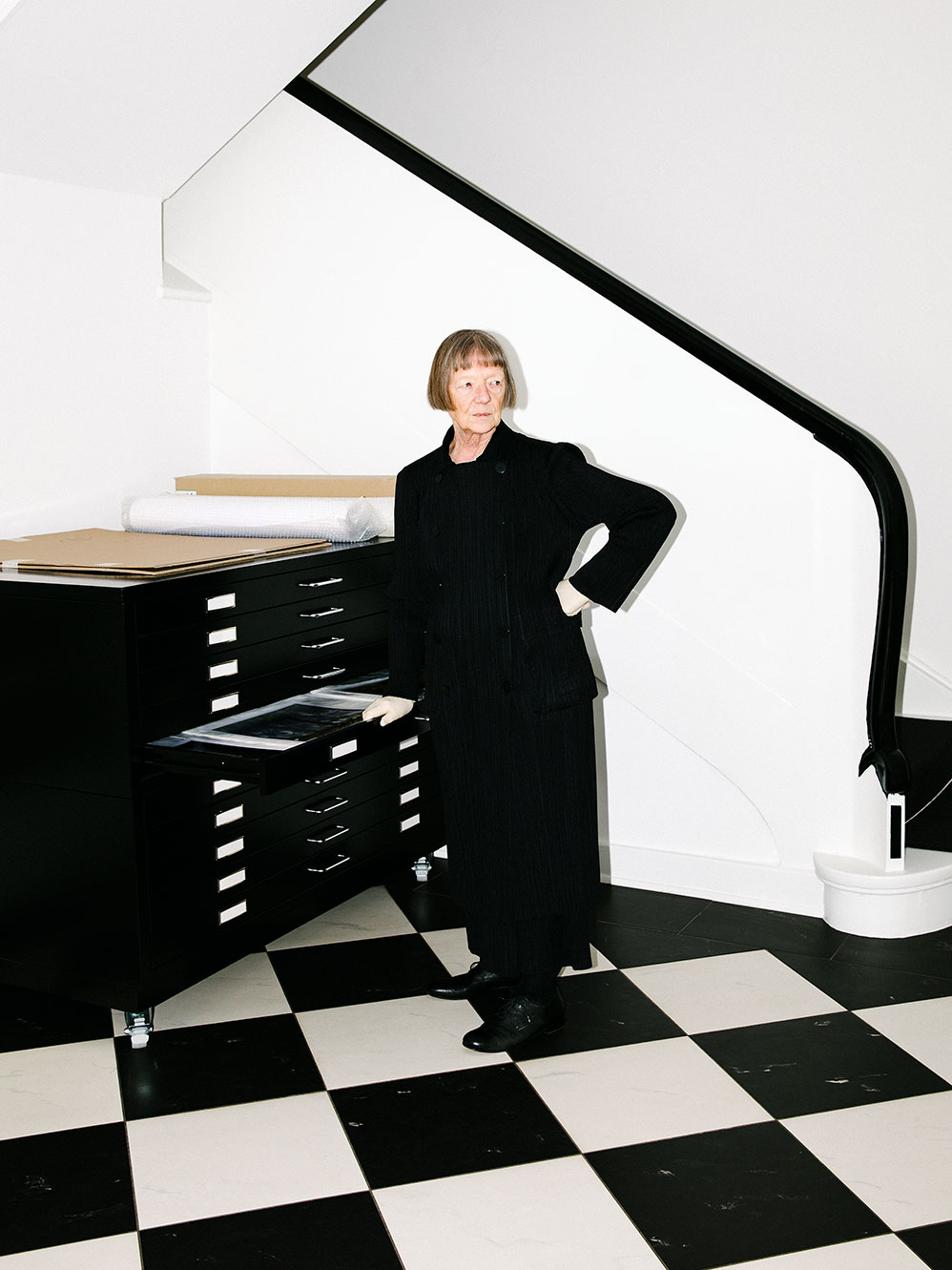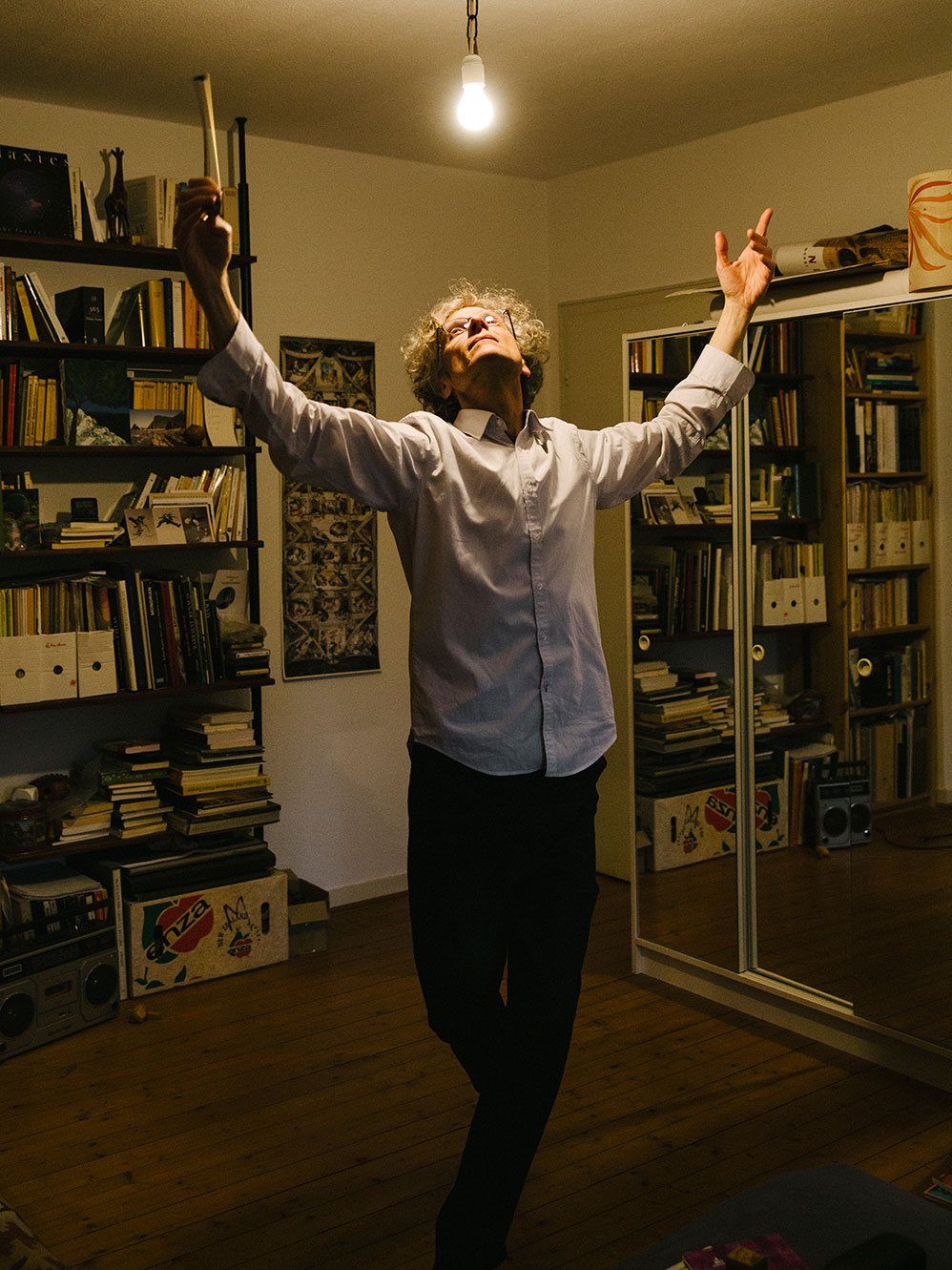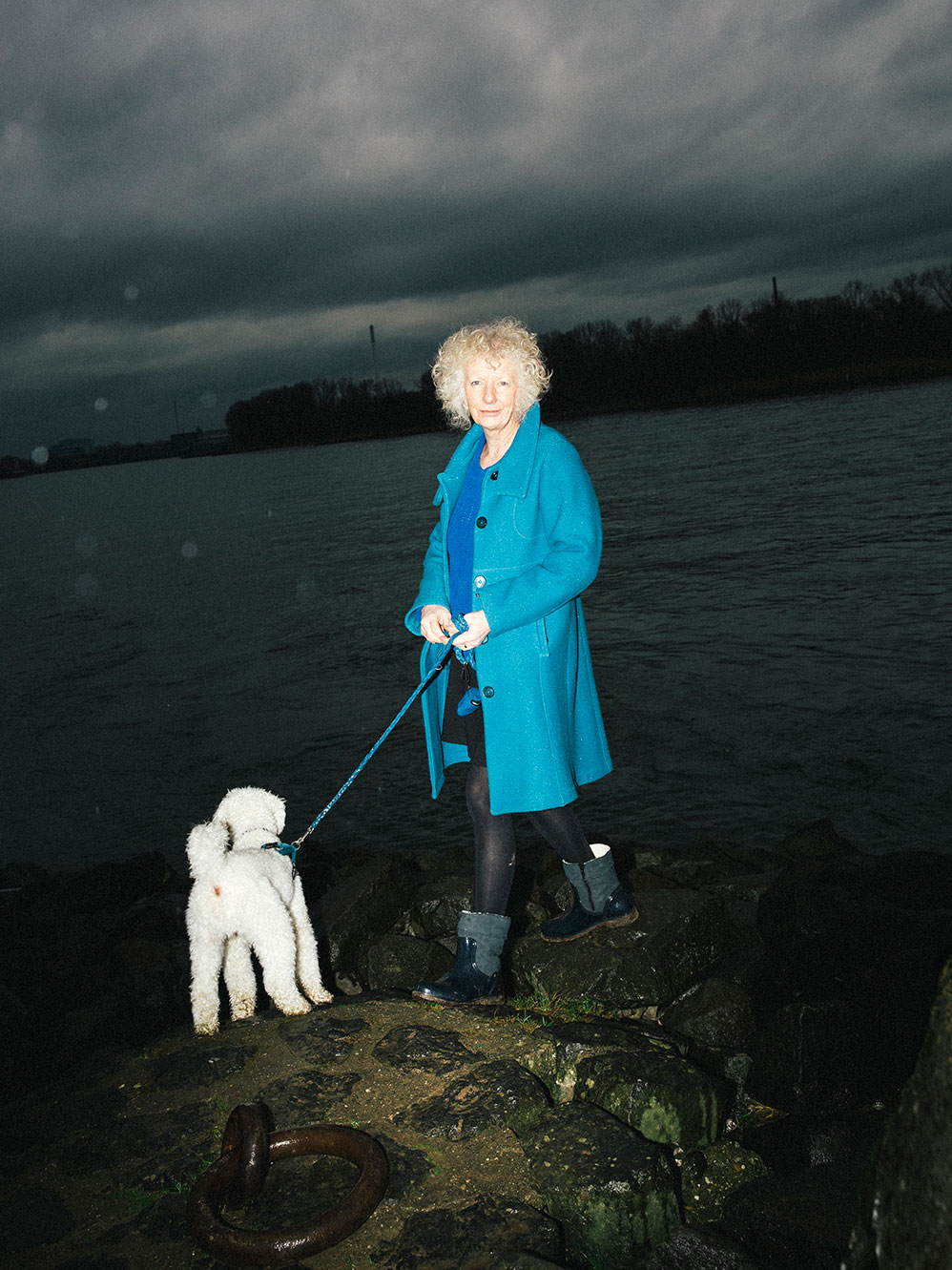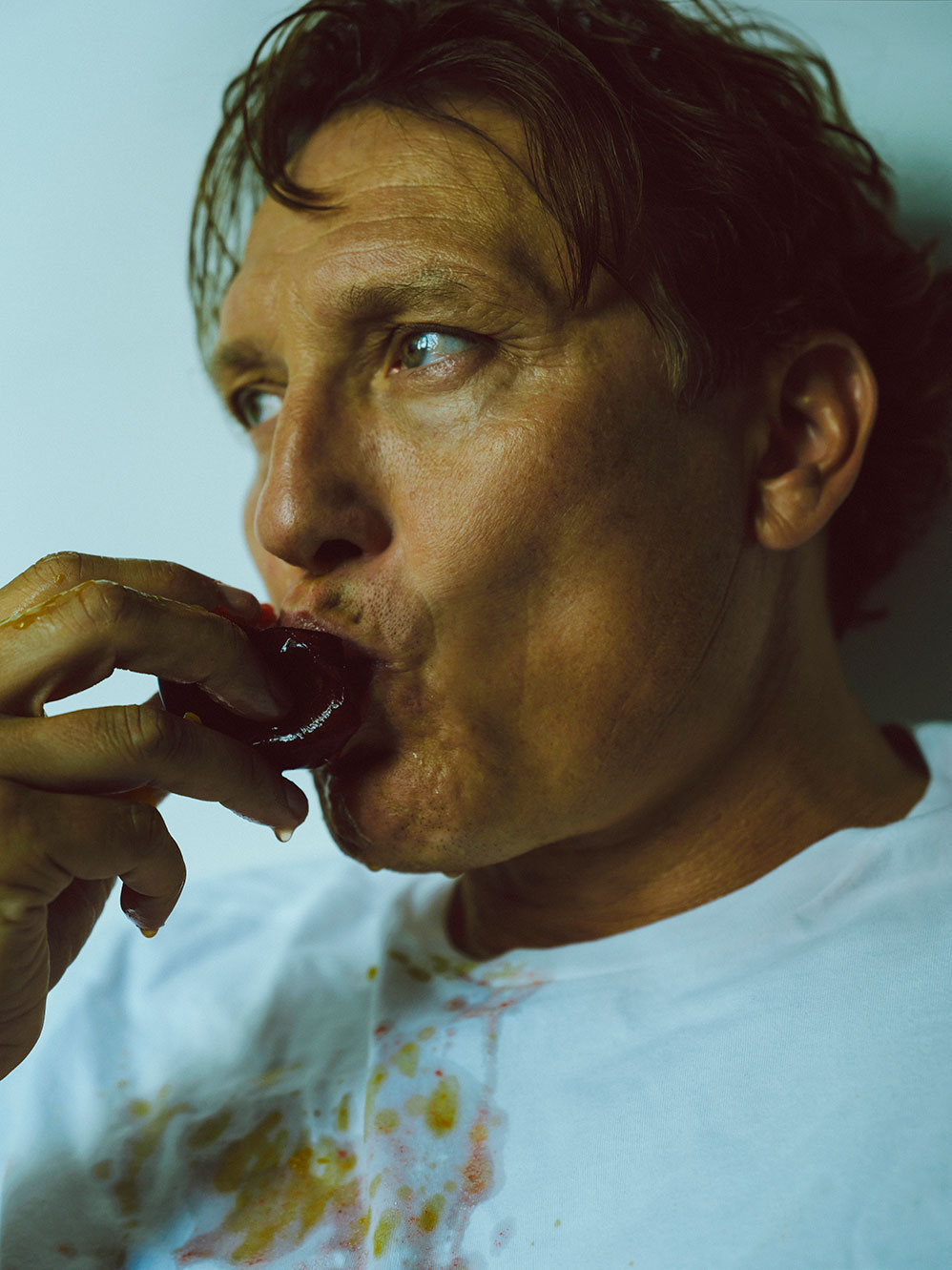The German photographer tells us about curiosity, preparing for chaos, and spending a whole summer underwater with her first camera.
In the last five years, Cologne-based photographer Julia Sellmann has been taking portraits for magazines such as National Geographic, Zeit Magazin, and The Guardian. She has photographed a great variety of subjects, from book publisher Gerhard Steidl to artist Thomas Ruff. During this time, her images have become distinct by being charmingly candid. In her process, Julia emphasizes the importance of creating a safe space for her subjects. By focusing on erasing the hierarchy between photographer and subject, she creates space for personal connection. This sense of familiarity translates into her images, which evoke feelings of closeness and vulnerability. In her recent project (23) Portraits, Julia looked back at her work for the first time. Going through the totality of her archive, she selected 23 portraits she found to be representative of her experiences as a photographer from 2016 to 2021. Teaming up with designer Lea Szramek, she transformed these portraits into a book. “A very first, very small retrospective” as Julia puts it.
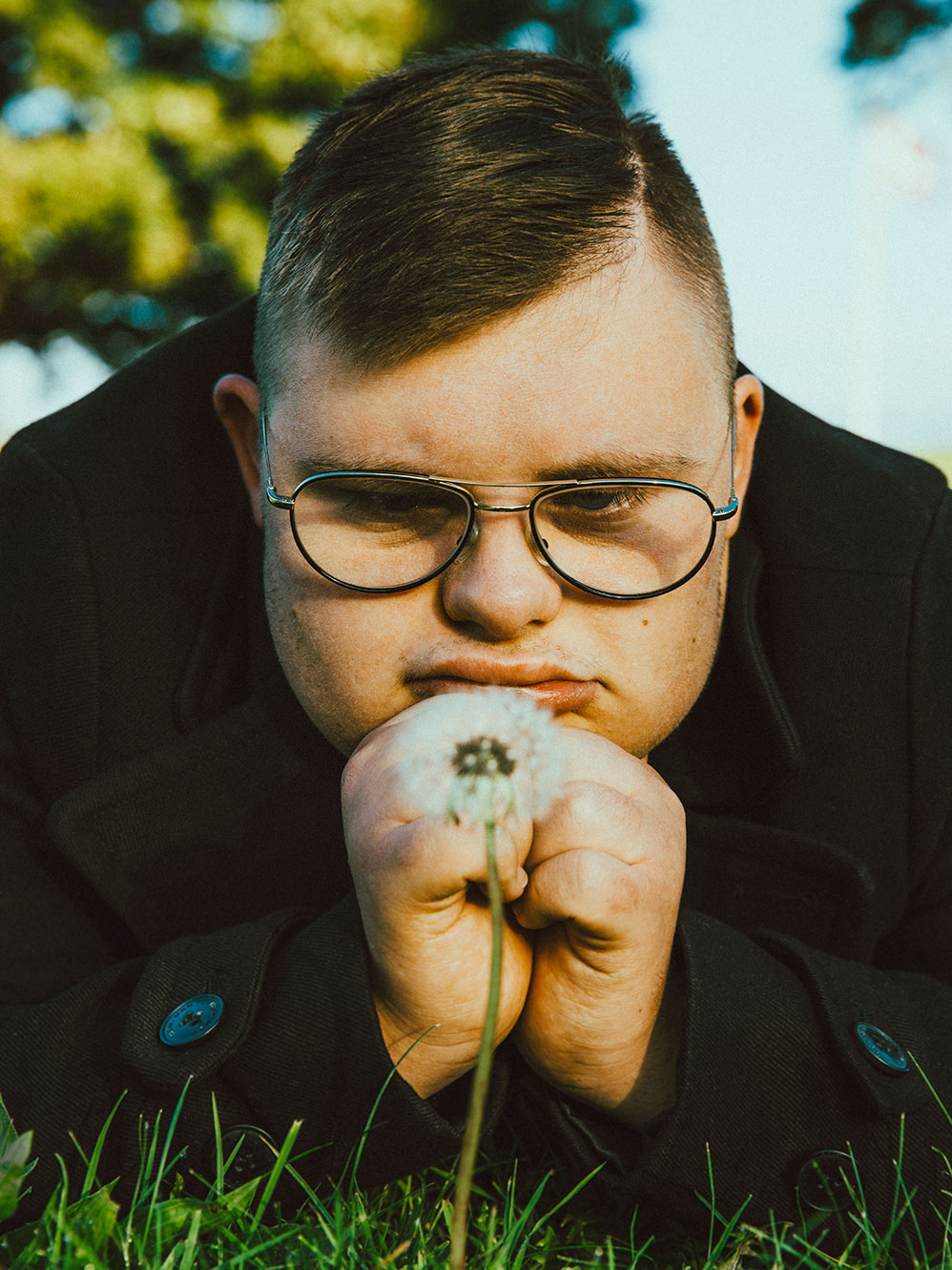
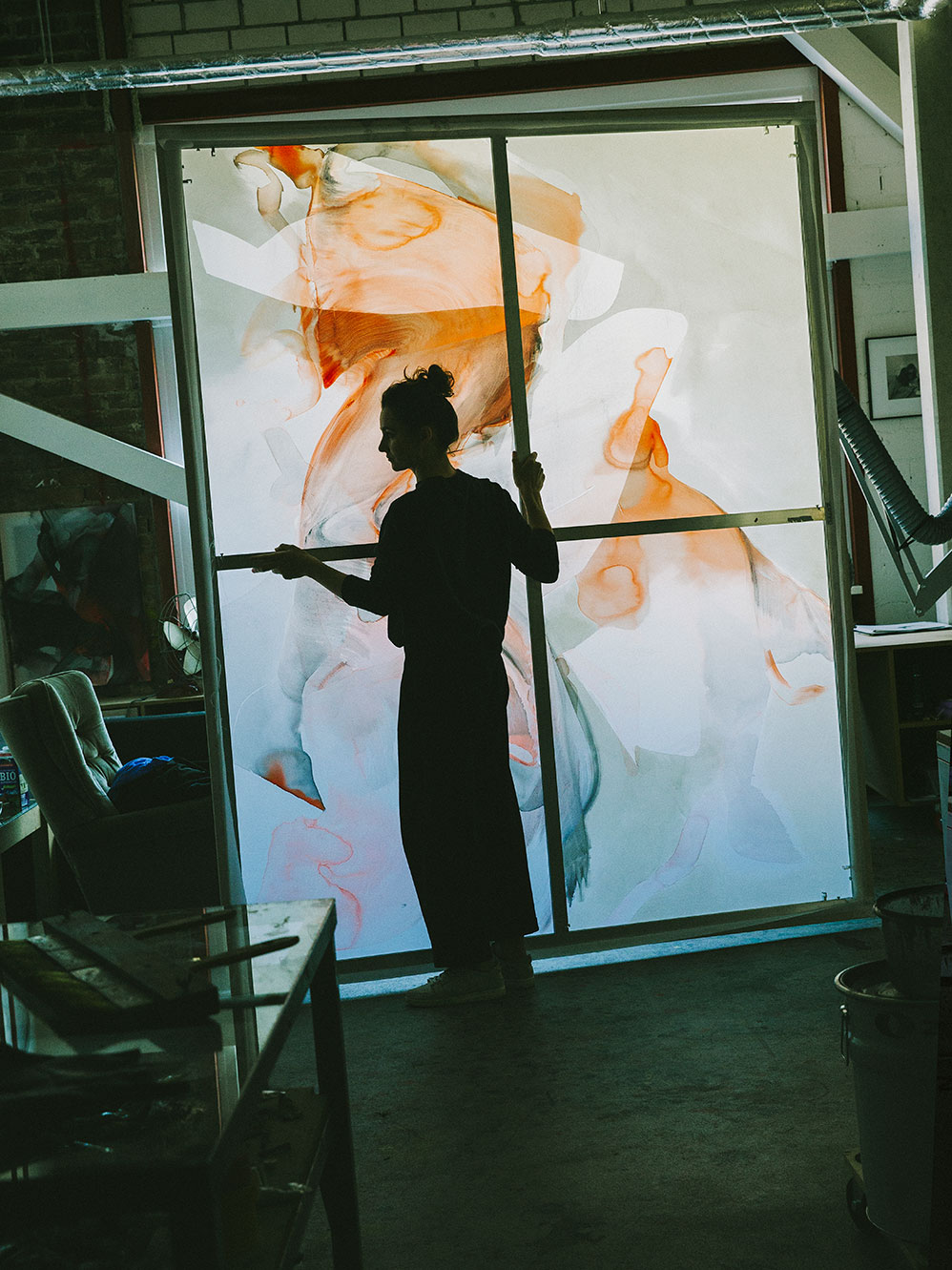
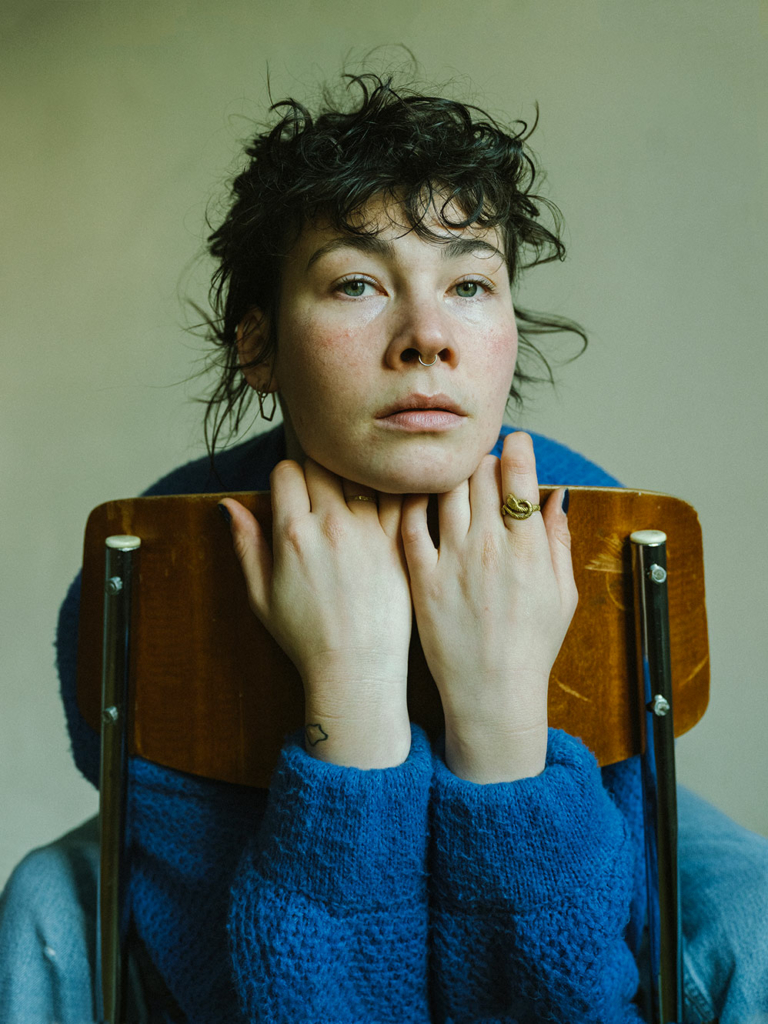
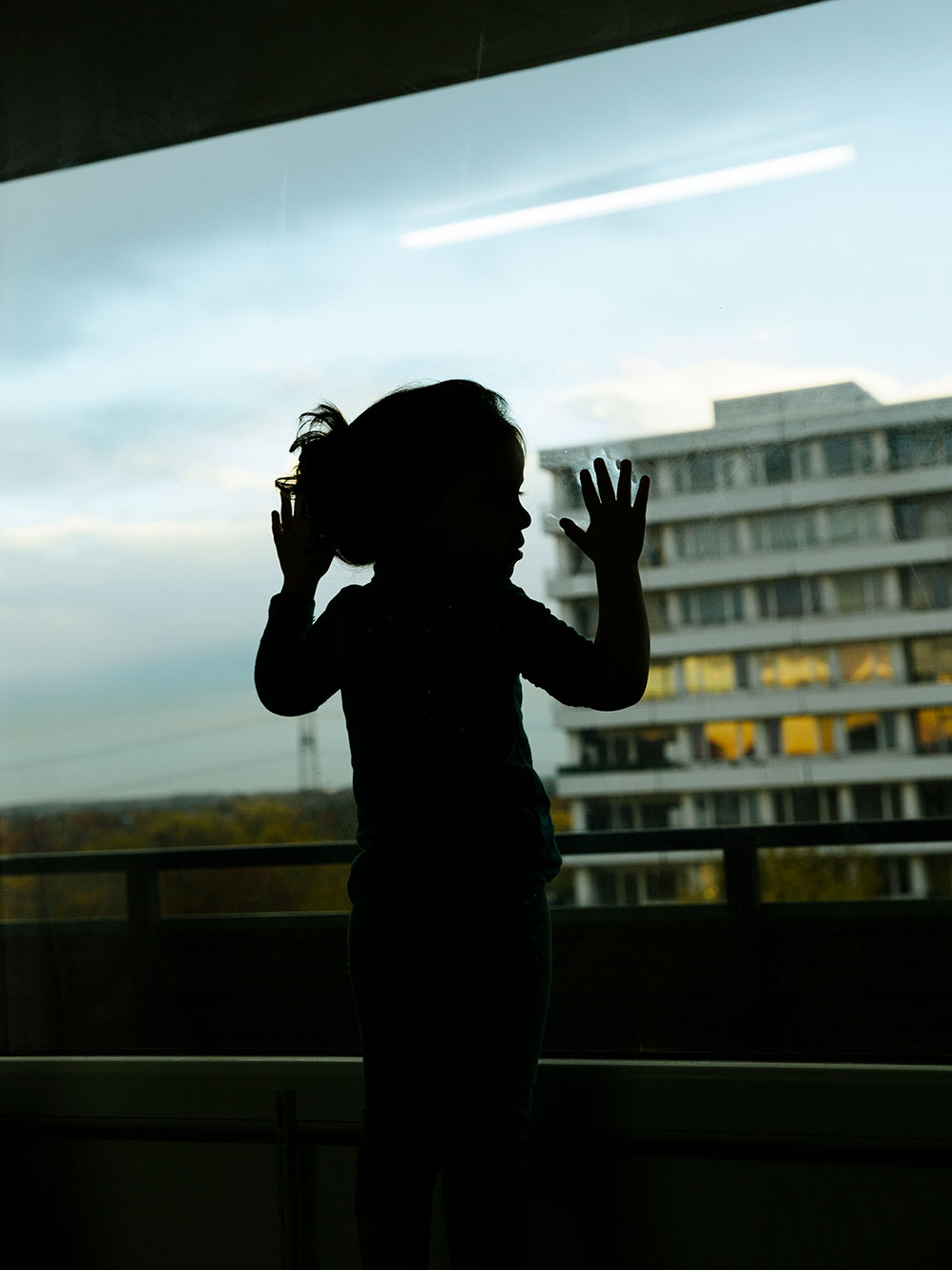
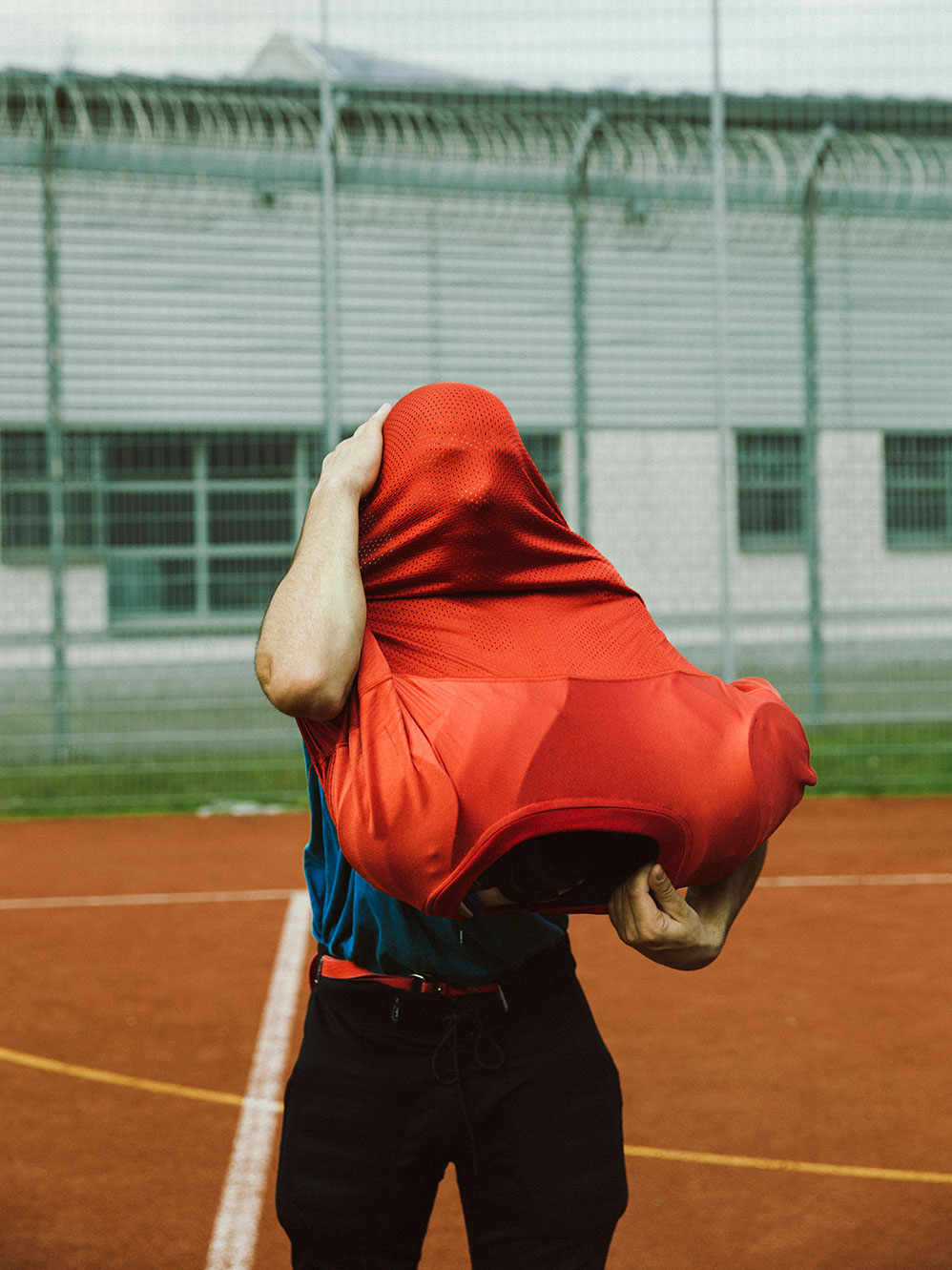
-
How did you first become interested in photography?
I remember that my father, who works as a locksmith, always encouraged me to think creatively and not be afraid to try things out – we worked a lot with wood and paper, with stones. With basically anything I could find in the forest nearby. At some point, leaf-pressing and stone-painting became boring, and we bought a camera together. I was ten years old. That was an experiment for both of us. No one in the family had anything to do with photography. I remember that the camera had an underwater mode that I was very proud of. I must have spent a whole summer just in the pool with the camera before I started photographing anything else.
-
Your book is a personal selection of twenty-three commissioned portraits. Why are portraits important to you?
I remember that I have always been fascinated by how people look, how they move, and dress. I come from a small village where everyone knows everything about each other or at least wants to know and shamelessly observes each other very closely. My family is extremely curious too, and apparently, I inherited this gift. The camera, and much more so the assignment of a magazine, now gives me the excuse or reason to be close to people I find fascinating. The desire to want to take portraits definitely lies in this curiosity I have for people. Working as a portrait photographer makes it possible for me, a rather introverted person, to connect with them, to get a glimpse of their lives. And that’s why I love working in journalism so much. The people I portray have a story to tell, which I get to support with my portraits.
-
Photographing people feels so personal. Were you nervous when you began doing it? Has that changed?
Yes and No! I was very nervous when I started doing portraits. As I said, I’m rather introverted and had no idea what I was doing in the beginning. In the first three semesters of my photography studies, I only took portraits of people I knew well, friends and family. Then, one of my professors suggested I start taking pictures of strangers. It wasn’t easy for me at the time, but I also knew that it was exactly what I always wanted to do. And for that, I had to get out of my comfort zone. I used to think that this feeling would eventually go away, but I am still nervous today, ten years later, or I would rather say excited –it’s just part of it! Unlike then, however, I now know much better how to channel my nervousness and use it to my advantage.
-
Looking at your portraits, they have this almost poetic casualness to them. There is a sense of spontaneity in each one. How do you create that feeling?
To be honest, I’m obsessed with planning things and my preparation. I try to research and find out as much as possible about the person before the appointment. I look at already existing photos of them to better understand how they look from their left, right, front, and back. Head to toe. I check what clothes they like to wear, watch interviews of them, and really inspect what gestures are typical of the person. Then I do the same careful research on the location of the shooting.
As soon as I get to know the person and the place, I always have a gut feeling. It may sound contradictory, but it is only through planning that I find the freedom to change everything and react spontaneously to unforeseen circumstances at the shooting. Sometimes I listen to the interviews made before my appointment and realize what I had planned doesn’t fit at all. Then, I often throw everything overboard at the last second. I like certain chaos at the appointment; a bit of shaky ground under my feet.
-
There is an intimacy to your portraits. How do you see the idea of intimacy in your work?
Ideally, the portrait session is a safe space where the subject and I can meet at eye level and try things out together to explore what works for both of us. I explain this participatory approach at the start of each shooting. I think a lot of people feel nervous at the beginning and have the urge to perform in a certain way when being photographed and are thus no longer authentic. Many get stuck in poses and facial expressions that they have trained beforehand. I try to somehow, get people to take off these masks during the shoot. It works differently for everyone, and I don’t always succeed and sometimes I don’t even have to. Sometimes it’s inappropriate for a story to be told. It depends on the person and the situation! My approach to portraits allows me to create images that seem intimate. Although, of course, the image I take of someone I’ve only known for a few minutes can’t really capture the person as a whole. But it can be close, and it can be honest. And at its best, it can evoke a certain feeling in the viewer.
-
Portraits have a very long history, but they seem to keep evolving and continue to be on-demand. How do you think they are relevant today?
Portraits have a long history. But we must remember that for a long time they were only reserved for a small group of society. First, the kings and queens had the money to have a painting made of themselves, then the bourgeoisie was the first to have their photographic portraits taken. Thankfully, in the meantime portraiture has democratized to the point where anyone can now take a selfie of themselves with their cell phone. This is, of course, a very different type of portrait than those taken by professional photographers. Since people are more and more aware of their representation—their image—they are taking more and more possession of it. It is becoming increasingly important, especially in journalism, to have independent portraits taken by portrait photographers.
It makes me happy to see that the faces and bodies presented in many of today’s portraits have diversified in race, gender, gender identity, religion, sexual orientation, body shapes, age, and abilities. I am glad to finally see and be part of the creative industry’s shift towards a more sensitive view on the issue of representation. In that sense, I believe that portraiture can help move our society forward by making sure our subjects mirror our diverse societies.
-
You work with national and international magazines. How does this affect your creative freedom? How do you deal with the negotiation between authorship and commission in your practice?
The project (23) Portraits has been somewhat a self-questioning concerning the relationship between my authorship and the commission. The work as a portrait photographer in this field of tension can be a curse and a blessing at the same time. But I have found that I am in the extremely privileged position of feeling very few restrictions. I enjoy a lot of creative freedom in journalism while working on very exciting stories. The tension between authorship and commission cannot be resolved. It is ultimately part of the working world in which I move. A reality that, after five years in the profession, has made me the photographer I am today.
-
Do you ever take self-portraits?
Not really! I haven’t done a self-portrait in ages, and I would say I’m simply not patient enough for it. I don’t even have a photo of myself on my website. Sometimes my girlfriend jokes that while I do all this research on my subjects, they may want to do the same before the shoot and end up having no idea what to expect. Actually, I think it can be helpful for people to not always have a clear idea about me beforehand and come into our shooting without preconceived expectations.
Julia Sellmann is a Cologne-based photographer with a focus on portraits. Make sure to pre-order her book (23) Portraits and visit her current exhibition at the SRZ gallery in Berlin.
To see more of her images, visit her website and Instagram.
Interview: Maria Paris
